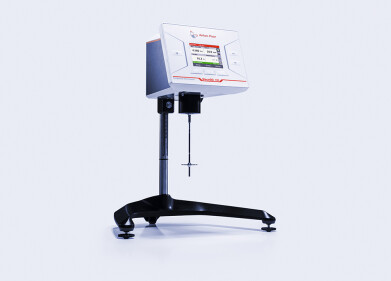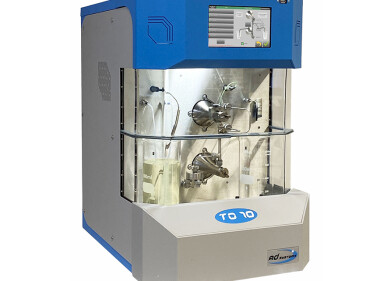-
 Fig 1
Fig 1 -
 Fig 2
Fig 2 -
 Fig 3
Fig 3
Analytical instrumentation
Low Power, Big Benefits
Mar 17 2010
Recent advances in wavelength dispersive X-ray instrument (WDXRF) technology allow new, lower power instruments to achieve impressively similar results to traditional high power systems with significantly lower cost and auxiliary support. The Thermo Scientific ARL OPTIM’X (Fig. 1) featuring Ultra Closely Coupled Optics (Fig. 2) and the patented, miniaturized SmartGonio™ is ideal for accomplishing demanding routine analyses across a full-range of fuel and lubricant applications.
Applications available for a fraction of the cost of high-power WDXRF systems include:
• Ultra low sulfur in vehicle fuels per ASTM D2622 and ISO 14596
• Contaminants in heavier fuels
• Fresh lubricant analysis per ASTM D4927 and D64443
• Crude oil characterization
The compact size of the ARL OPTIM’X now allows for a full range of WDXRF analysis capabilities outside refinery central labs. It offers the most cost effective analytical solution for dedicated applications. For easiest start-up and use, the ARL OPTIM’X comes equipped with PetroilQuant (Fig. 3) , a pre-calibration program that facilitates quantitative analysis for all the common elements in petroleum products. In addition, a minimum of auxiliary equipment including no external chiller necessary makes the ARL OPTIM’X the most cost effective solution for all laboratories dealing with petroleum products.
In addition to its compact design and lower cost of ownership, the ARL OPTIM’X retains all of the advantages that make WDXRF a preferred elemental analysis technique:
• Full coverage of elements of interest in petroleum products, from Na to Bi
• Virtually no sample prep
• Excellent sensitivity and repeatability on both light and heavy elements
• High degree of flexibility in terms of measurement of analytical lines, background positions and internal references
• High dynamic range (sub-ppm to 100%)
Lower Cost Analysis of Fuels
Shifting demands within the petro industry necessitate corresponding changes to WDXRF technology and design. Lower power systems address the critical needs
for lower instrument and operating costs; the challenge has been to design such systems to meet the exacting standards required by ASTM/ISO norms and new lower
regulatory standards. For a demonstration of the focused capabilities of new lower power systems, the ARL OPTIM’X was calibrated for analysis of sulfur in petroleum products according to the ASTM D 2622 and ISO 20884 norms; both methods require analysis of the sulfur k-alpha peak and a background position. A large variety of products can be analyzed on the same sulfur calibration curve, some with very high viscosity requiring heating in order to flow into the liquid cell, e.g. heavy fuels and residues, while others may be quite volatile, e.g. gasoline. With a limit of detection of 1 ppm in less than four minutes counting time, the ARL OPTIM’X monitors sulfur comfortably below today’s most stringent standards. Subsequent precision tests additionally exceeded the guidelines indicated in these two methods.
For more information, visit www.thermo.com/xpetro or www.thermo.com/optimx
E-mail: analyze.ch@thermo.com
Digital Edition
PIN 25.6 Buyers' Guide
January 2025
Buyers' Guide Directory - Product Listings by Category - Suppliers Listings (A-Z) Articles Analytical Instrumentation - ASTM D7042: The Quantum Leap in Viscosity Testing Technology -...
View all digital editions
Events
Jan 20 2025 San Diego, CA, USA
Jan 22 2025 Tokyo, Japan
Jan 25 2025 San Diego, CA, USA
SPE Hydraulic Fracturing Technology Conference and Exhibition
Feb 04 2025 The Woodlands, TX, USA
Feb 05 2025 Guangzhou, China


















